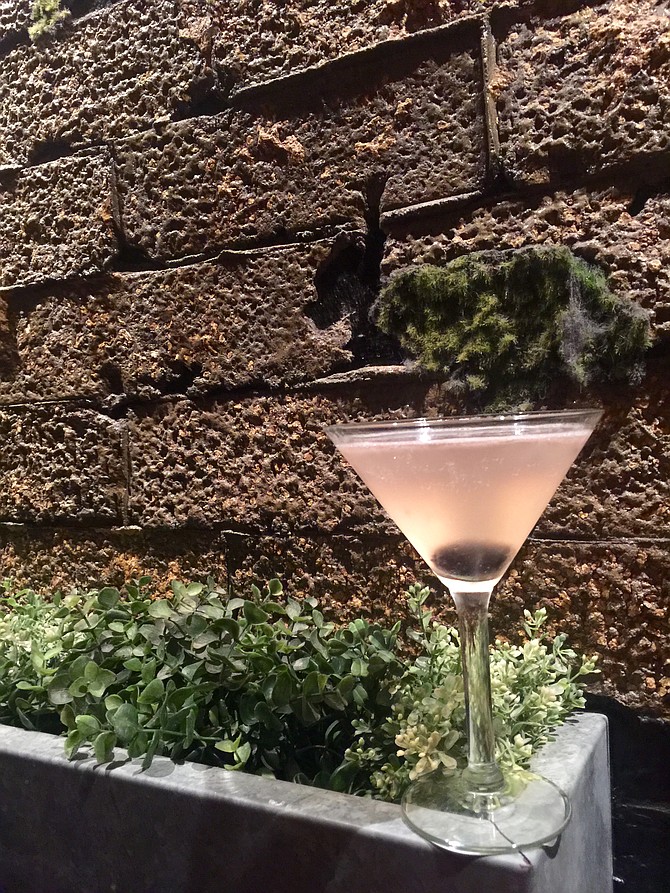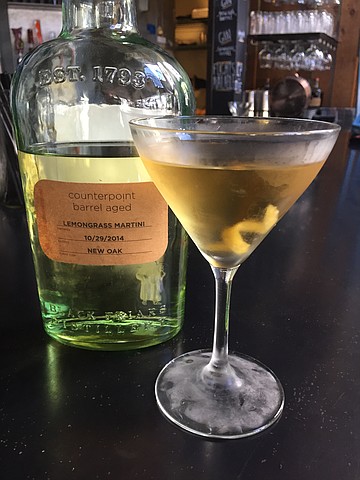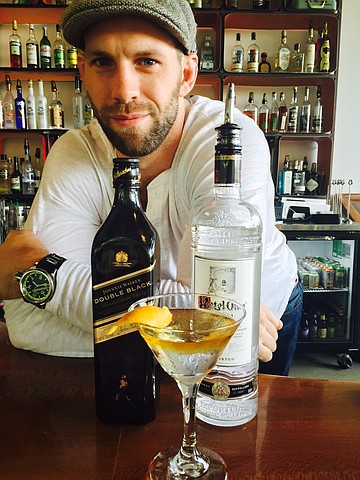 Facebook
Facebook
 X
X
 Instagram
Instagram
 TikTok
TikTok
 Youtube
Youtube

James Bond not only rules the box office, but the super spy has also shaken and stirred trends at cocktail bars since the 1960s.
With the release of the latest Daniel Craig flick Spectre, some Bond-loving boozehounds are trying to get their drink on in the spirit of the spy guy, says Ryan Andrews, bar manager at High Dive in Bay Park.
“I’ve made a few more than usual recently,” says Andrews. “The cool thing is that people are more receptive to drinking a gin martini with vermouth, which is the original drink.”

Many people first heard of a martini while watching Sean Connery, Roger Moore, and Pierce Brosnan order one while on duty. Although it sounds cool to hear Bond say he wants one “shaken, not stirred,” there is a debate among mixologists as to whether that’s the best way to enjoy the cocktail.
“When it comes to the traditional gin martini, you don’t want to shake it because of the ‘bruising,’” says Jeffrey Lambkin, resident mixologist at Harrah’s Resort Southern California in Valley Center. “You have complex flavors, and you want a velvety texture to the drink to bring out the nuances and complexity of a good vermouth and gin.
“But with a vodka martini, shaking it will make it cloudy, with a sharper mouth feel, and it has the benefit of making it colder due to the slivering of the ice cubes.”
Damien Carpenter of Cusp in La Jolla also admits to being shaken — or at least confused — by James Bond.
“In Casino Royale, James Bond expresses his dislike of bruised spirits,” says Carpenter. “With that in mind, it seems that Mr. Bond should have preferred to have his martini stirred, as to avoid aerating the vodka and changing its taste.”
Lambkin suspects Ian Fleming’s decision to have Bond shake things up martini-wise in the original Bond novels was based on a variety of factors.
“The vodka martini was invented in the 1940s as a marketing initiative to sell Smirnoff vodka, along with the Moscow Mule, Screwdriver, and Bloody Mary,” he says. “Before then, vodka was almost non-existent in any location outside of Russia or Eastern Europe. The original martini was made with gin and vermouth, which you wouldn’t dare stir. So I think that ordering it this way was just a way for James Bond to help market vodka’s growth and have a cool way to order it. To be a rebel.”

Greg Schmitt of Halcyon in East Village believes that Bond’s shaken-not-stirred is because, to paraphrase Mick Jagger, 007 is a man of wealth and taste.
“The reason James Bond orders it shaken is because he is a so-called experienced vodka drinker and desires a nice, crystally layer on top of his martini,” says Schmitt. “If someone orders a stirred vodka martini, you’d better double check their ID because they are probably newly or not even 21 and just found out what a martini is.”
There is also some debate on what a martini even is, says Gina Fisher, manager of Vin de Syrah in the Gaslamp.
“One common misnomer is that the word ‘martini’ refers to a type of drink,” she says. “It doesn’t. Martini is actually a type of glass, and I can make anything a martini. So instead of asking what martinis we have, tell me what kind of drink you would like and request it ‘up’ or ‘in a martini glass.’”
Bartenders may disagree on the particulars of a martini, but they agree on one thing: Don’t order one with a fake British accent.


James Bond not only rules the box office, but the super spy has also shaken and stirred trends at cocktail bars since the 1960s.
With the release of the latest Daniel Craig flick Spectre, some Bond-loving boozehounds are trying to get their drink on in the spirit of the spy guy, says Ryan Andrews, bar manager at High Dive in Bay Park.
“I’ve made a few more than usual recently,” says Andrews. “The cool thing is that people are more receptive to drinking a gin martini with vermouth, which is the original drink.”

Many people first heard of a martini while watching Sean Connery, Roger Moore, and Pierce Brosnan order one while on duty. Although it sounds cool to hear Bond say he wants one “shaken, not stirred,” there is a debate among mixologists as to whether that’s the best way to enjoy the cocktail.
“When it comes to the traditional gin martini, you don’t want to shake it because of the ‘bruising,’” says Jeffrey Lambkin, resident mixologist at Harrah’s Resort Southern California in Valley Center. “You have complex flavors, and you want a velvety texture to the drink to bring out the nuances and complexity of a good vermouth and gin.
“But with a vodka martini, shaking it will make it cloudy, with a sharper mouth feel, and it has the benefit of making it colder due to the slivering of the ice cubes.”
Damien Carpenter of Cusp in La Jolla also admits to being shaken — or at least confused — by James Bond.
“In Casino Royale, James Bond expresses his dislike of bruised spirits,” says Carpenter. “With that in mind, it seems that Mr. Bond should have preferred to have his martini stirred, as to avoid aerating the vodka and changing its taste.”
Lambkin suspects Ian Fleming’s decision to have Bond shake things up martini-wise in the original Bond novels was based on a variety of factors.
“The vodka martini was invented in the 1940s as a marketing initiative to sell Smirnoff vodka, along with the Moscow Mule, Screwdriver, and Bloody Mary,” he says. “Before then, vodka was almost non-existent in any location outside of Russia or Eastern Europe. The original martini was made with gin and vermouth, which you wouldn’t dare stir. So I think that ordering it this way was just a way for James Bond to help market vodka’s growth and have a cool way to order it. To be a rebel.”

Greg Schmitt of Halcyon in East Village believes that Bond’s shaken-not-stirred is because, to paraphrase Mick Jagger, 007 is a man of wealth and taste.
“The reason James Bond orders it shaken is because he is a so-called experienced vodka drinker and desires a nice, crystally layer on top of his martini,” says Schmitt. “If someone orders a stirred vodka martini, you’d better double check their ID because they are probably newly or not even 21 and just found out what a martini is.”
There is also some debate on what a martini even is, says Gina Fisher, manager of Vin de Syrah in the Gaslamp.
“One common misnomer is that the word ‘martini’ refers to a type of drink,” she says. “It doesn’t. Martini is actually a type of glass, and I can make anything a martini. So instead of asking what martinis we have, tell me what kind of drink you would like and request it ‘up’ or ‘in a martini glass.’”
Bartenders may disagree on the particulars of a martini, but they agree on one thing: Don’t order one with a fake British accent.
Comments